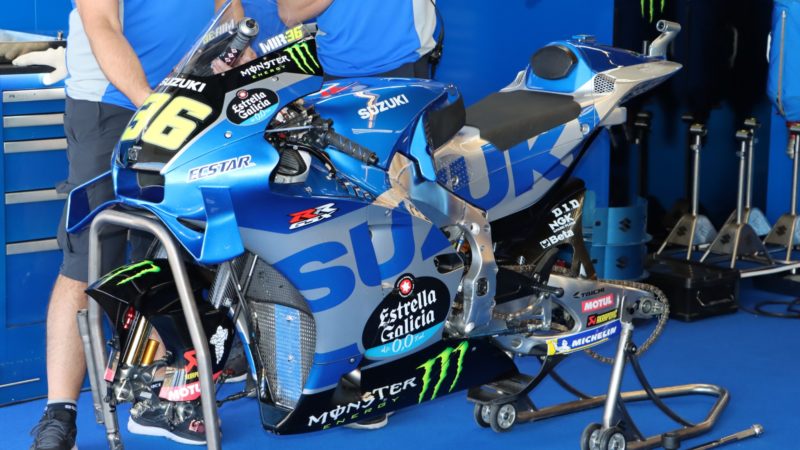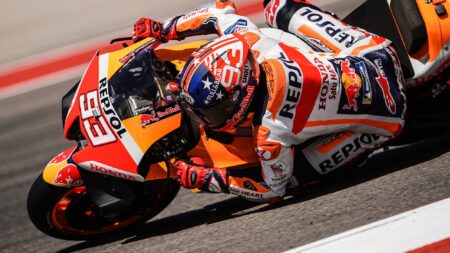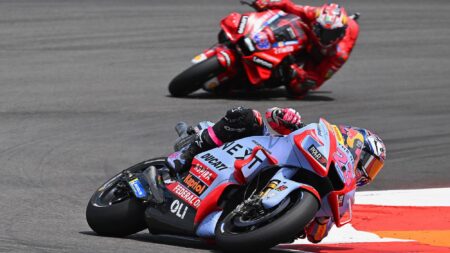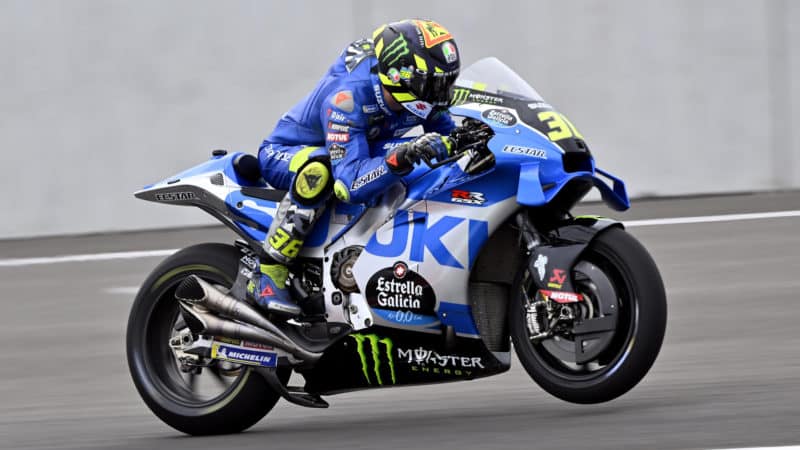This kind of increase in straight-line performance – acceleration and top speed – makes a huge difference, because riders have the chance to draft faster bikes, attack on the brakes, abuse their tyres less and use strategies that were previously impossible.
So how has Suzuki achieved this transformation?
More horsepower, certainly. Factory Ducati rider Jack Miller reckons the 2022 GSX-RR has 15bhp more than the 2021 bike but there’s no way Suzuki’s engine tuners have found that much extra punch. And anyway, at over 200mph it’s not horsepower that counts so much, it’s drag.
At the end of last season Suzuki MotoGP project leader Shinichi Sahara told me his engineers were making the biggest internal change to the GSX-RR engine since the machine began its world-title quest in 2015, but when you ask him to name a 2022 horsepower number he laughs heartily. So I asked him just to give me a rough idea.
“MotoGP technical rules purposefully restrict super-high revs, but there are ways to find a bit more power”
“No, I cannot say the number but it’s nothing like what Jack said!” he laughed again. “Increasing horsepower is never easy but what’s important is how you increase the power. If you just increase peak power it’s easier, but the engine character of the GSX-RR has never changed, so the increase from bottom power to top power is the same. In this case even with an extra one or two horsepower all the way through the rpm range you can make a big difference to overall performance around the racetrack.”
MotoGP technical rules purposefully restrict engine designers from getting carried away with super-high revs. The four-cylinder, 81mm bore limit prevents high-revving, short-stroke engines, but there are ways to find a bit more power.
Reducing friction is arguably the best way, because by making the pistons, crankshaft and everything else move more easily you also cool the engine and reduce fuel consumption, which allows you to use more fuel over race distance, so it’s a win, win, win.
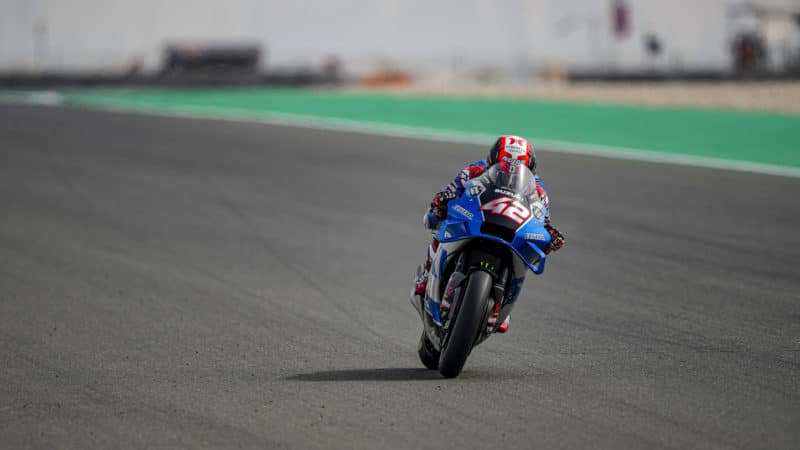
Fastest down the straights in Losail, Suzuki has built a rocket for 2022
Suzuki
Next comes improving the engine’s volumetric efficiency. An engine is basically an air pump, so if you can pump more air and fuel into the engine, burn it efficiently and get rid of it quickly then you will get more horsepower, but you’ll also use more fuel. At Losail, a high fuel-consumption track, Suzuki came closer than usual to draining the GSX-RR’s fuel tanks, which suggests its engineers have indeed increased volumetric efficiency.
Suzuki has most likely done this via CFD (computer flow dynamics) programs and by spending lots of time on the flow bench, to improve intake port and combustion chamber shape to increase air/fuel flow.
And next is the age-old trick of increasing rpm – not easy with a very conservative bore limit – but not impossible, if you’re prepared to spend the money.
Lighter, stronger metals (also restricted by MotoGP’s technical regulations, because unobtanium isn’t cheap) ensure that mean piston speeds (the piston’s average speed as it rises and falls and passes top-dead centre and bottom-dead centre) never stop increasing, with current MotoGP engines surpassing 30 metres per second.
“Suzuki says the shapeshifter is the biggest factor in improved straight-line performance”
Today’s 1000cc MotoGP engines rev to 19,000rpm or more.
And yet the Suzuki’s dramatic improvement in straight-line speed – so it’s often as fast or faster than the super-powerful Aprilia, Honda and KTM – is mostly down to Hamamatsu engineers working at reducing drag, rather than increasing horsepower.
Suzuki was MotoGP’s last factory to introduce a shapeshifter, which squats the rear of the bike when the rider engages the system while exiting corners.
The shapeshifter does two things. First, it lowers the centre of mass, which reduces wheelies, which is vital because a MotoGP bike’s physical wheelie limit has a much greater effect on acceleration in the first three gears than pure power.
Second, it changes the angle of the bike’s downforce wings, which decreases drag at high speeds, increasing top speed.

